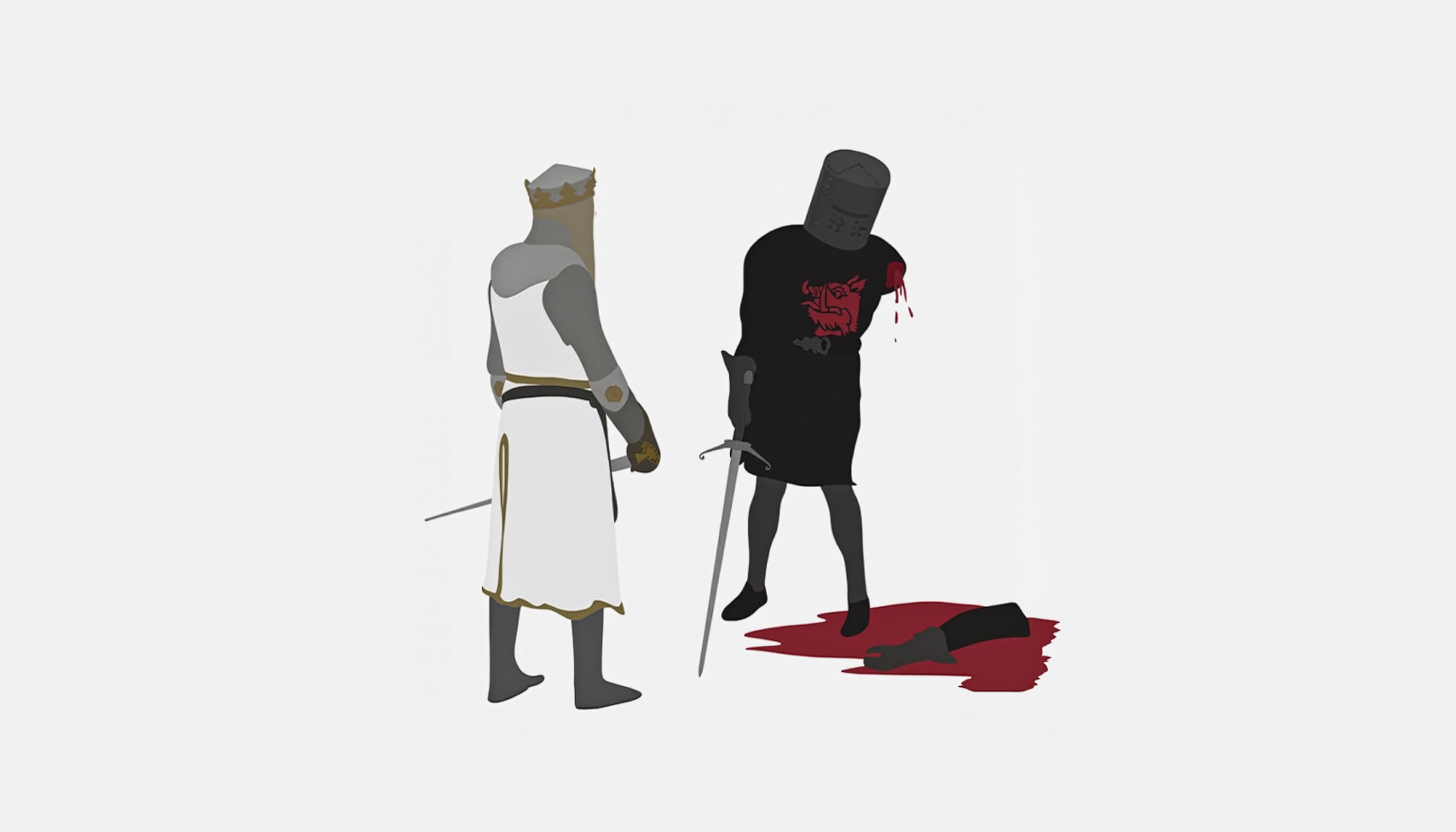
If you’ve seen Monty Python and the Holy Grail, you know the scene. King Arthur slices off the Black Knight’s arm. Blood spurts.
The Knight shrugs:
“’Tis but a scratch.”
A second arm goes.
“I’ve had worse.”
Soon he’s a torso on the ground, still shouting,
“Come back and fight!”
It’s absurd. It’s funny. We love it.
It’s also a useful metaphor for how we all sometimes regard UX.
Forms that ask for twice the information they need. Patterns reused in the wrong way. Dropdowns that lag. Searches that return nothing useful. Each one dismissed as “not critical enough” to warrant true UX design attention - and this is especially the case when a product manager is aiming to keep developers busy and ship on time.
Each one forgotten, undocumented - left to bleed. Until enough amass and the product is limbless, everyone is insisting it’s fine, while users quietly walk away.
Its a simple truth that 'UX Bugs' dont carry the same clout as Code Bugs.
Henry Ford said...
“There are no big problems, only small ones piled together.”
That’s one killer sentence right there. Small issues don’t kill a product on their own. They kill it when teams dismiss them and forget them.
Smart people build flawed products all the time. Not because they lack talent, but because they treat UX as optional polish for the customer instead of a daily practice. The difference between products that thrive and those that bleed out isn’t vision. It’s habit.
Conviva’s 2025 State of Digital Experience report found 91% of consumers downgrade their view of a brand after a negative digital experience. Even tiny bits of friction can be enough for customers to leave, but in general it is the sum of many small things that combine to create a bad experience. The perceived speed, the language used, the feel and of course the interface.
They don’t complain. They just disappear.
And yet small moments can build loyalty too. Duolingo added a confetti animation when you finish a lesson. No AI. No redesign. Retention went up. Why? It rewarded effort. It closed the loop. It showed users they mattered.
Ignore the small cuts, you lose trust. Add small wins, you keep it.
The invisible tax of bad UX and service design is paid inside companies every day. Ten-second lags. Buttons that don’t align. Systems that don’t talk to each other. Multiply those by thousands of employees, and you lose weeks of productivity each quarter.
These things don’t crash systems. They corrode them. They wear down decision-making and morale. And because they don’t show up on dashboards, leaders pretend they don’t exist. That’s how whole limbs get lost.
UX fails fastest when no one owns it. You see it in myGov. Brilliant designers and researchers, but no single point of accountability for what is branded as an all of government experience. Each release is the best possible outcome inside its silo, but without shared ownership, improvements are diluted - and experiences underwhelm.
During COVID, urgency forced interdepartmental alignment and progress surged. When alignment slipped, so did the habit of progress and caring for the quality of experience.
Now compare that with CommBank. It doesn’t deliver flawless UX, but it does something powerful: it communicates progress. Small features, nudges, tweaks – all visible, all signalling that someone is owning the user experience day to day. Customers see movement, and that creates forgiveness and loyalty.
Ownership without communication feels invisible. Communication without ownership feels hollow. When you connect the two, UX becomes part of your brand.
Teams love big rebuilds. I know I do. Start from scratch with a new platform, new thinking - this time we’ll do everything the right way, and build it clean. But no moonshot saves you if the daily habits aren’t there before you begin. Your product is in decline before its feature complete.
The Black Knight survives in The Holy Grail.
But without UX habits our products won’t.
The cure isn’t glamorous. It’s daily. It’s boring. But it works.
Sure we can release imperfect features all the time... but commit to:
- Log every UX issue, no matter how small.
- Fix at least one UX issue in every sprint.
- Everyone owns the experience.
- Communicate improvements to your users.
It’s how you stop the bleeding and build resilience and trust. When UX is owned as a habit, products last longer and customers stay.